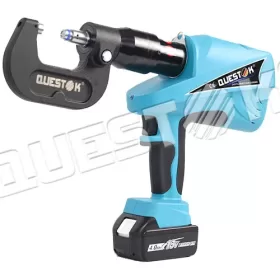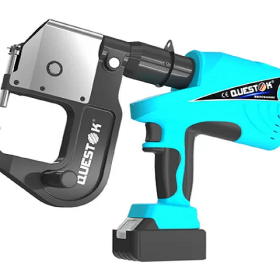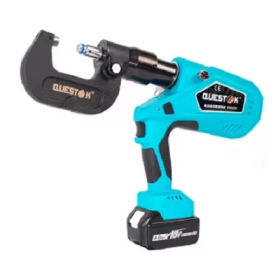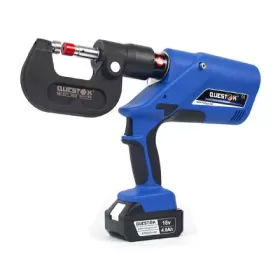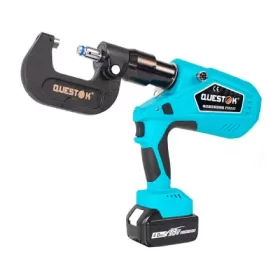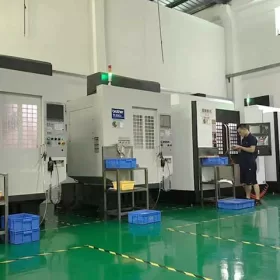Round Head Rivets in Shipbuilding
Round Head Rivets in Shipbuilding: A Historical Perspective of Joining Techniques
Round head rivets have played a significant role in shipbuilding throughout history, serving as the primary method of joining metal plates to create a watertight hull. In this article, we explore the various aspects of round head rivets in shipbuilding, highlighting their materials, applications, advantages, and decline with the advent of modern joining methods.
Materials and Characteristics
Round head rivets are typically made of iron or steel and consist of a cylindrical shank with a rounded head on one end. The shank is inserted through pre-drilled holes in the plates, and the head is then hammered or pressed to create a secure connection. The strength of the rivet joint depends on the material, diameter, and length of the rivet, as well as the tightness of the fit.
Applications
Round head rivets were widely used in shipbuilding for joining the hull plates, ribs, and other structural components. They were particularly important for sealing the watertight compartments, as the round head provided a smooth surface that minimized leaks. Riveting was also extensively employed in constructing boilers, tanks, and other pressure vessels.
Advantages
Round head rivets offered several advantages in shipbuilding. Firstly, they were relatively easy to install, requiring only a few basic tools. Secondly, they provided a strong and reliable joint capable of withstanding the harsh marine environment. Thirdly, riveting allowed for the adjustment of the tightness of the fit, ensuring a secure seal against water infiltration.
Decline and Modern Techniques
With the advent of modern welding techniques in the early 20th century, the use of round head rivets in shipbuilding gradually declined. Welding offers several advantages over riveting, including faster installation, improved joint strength, and reduced weight. Additionally, welding eliminates the need for pre-drilled holes, simplifying the construction process.
Today, round head rivets are still used in certain applications where a traditional or decorative appearance is desired. However, they have largely been replaced by more efficient and versatile welding techniques, which have become the standard for joining metal components in modern shipbuilding.
Conclusion
Round head rivets have played a crucial role in shipbuilding for centuries, providing a reliable and effective method of joining metal plates to create watertight structures. Their widespread use was a testament to their strength, durability, and adaptability. However, with the advancement of welding technology, round head rivets have gradually been phased out from modern shipbuilding, giving way to more efficient and versatile joining methods. Nevertheless, they remain an important part of shipbuilding history, representing a legacy of craftsmanship and engineering ingenuity.
- Company News
- Industry News
- Tag
- Tags
-
The Advantages of Questok Rivet Guns: Precision, Efficiency, and Durability
In industrial fastening applications, the choice of tools directly impacts productivity, safety, and long-term cost-effectiveness. Questok rivet guns have emerged as a standout solution for professionals across aerospace, automotive, and construction sectors. Combining advanced engineering with user-centric design, these tools deliver unmatched performance. Below are the key advantages that make Questok rivet guns a preferred choice:
-
Rivet Gun FAQ
Rivet Gun FAQ-SPR
-
Fast Assembly and Repair With Cordless Solid Rivet Gun
Questok cordless solid rivet gun stands out as a pivotal innovation, merging portability with power to facilitate efficient and effective fastening in a myriad of applications.
-
Redifine The Role of Self-piercing Riveting Gun Machine
Self-piercing riveting adopts high-speed mechanical fastening skill that joins thin sheet materials, typically steel and aluminum alloys.
-
The Latest Innovations in Clinching Tool Design
Explore the latest innovations in clinching tool design, redefining precision, efficiency, and versatility in material joining.
-
The Application and Maintenance of Self-Piercing Rivet Guns
Delve into the applications of self-piercing rivet guns in the automotive and aerospace industries and reveal the essential maintenance practices that ensure their accuracy and efficiency.
-
Rivetless Riveting Gun for Ventilation Duct Projects
The ventilation duct rivetless gun is a tool for riveting ventilation ducts without rivets.
-
Guide to Using Self-Piercing SPR Riveting Gun
In the automotive industry, self-piercing SPR (Self-Piercing Rivet) riveting guns are commonly used for joining metal components in vehicle bodies, including BMW vehicles.
-
Rivet Gun FAQ
Rivet Gun FAQ-SPR
-
Versatile Fastening- Applications of the Handheld Rivet Gun Across Industries
In the realm of fastening, the handheld rivet gun stands as a testament to ingenuity and versatility. Its ability to effortlessly join materials with sheer strength and permanence has revolutionized manufacturing and construction processes, leaving an enduring mark on diverse industries. Aerospace: Where precision and reliability are paramount, the rivet gun shines. In aircraft assembly, […]
-
Time-Saving Tools- Speeding Up Projects with Electric Blind Rivet Guns
In the whirlwind of project deadlines, every minute counts. But what if there was a tool that could dramatically reduce assembly time, giving you an edge in the race against the clock? Enter the electric blind rivet gun: your secret weapon for lightning-fast and effortless riveting. Electric blind rivet guns are the ultimate time-savers for […]
-
Streamlining Fastening- How an Electric Blind Rivet Gun Enhances Efficiency
Introduction In the realm of manufacturing and assembly, fastening plays a crucial role in securing components and ensuring structural integrity. Traditional manual rivet guns, while reliable, are often time-consuming and labor-intensive. The advent of electric blind rivet guns has revolutionized the fastening process, significantly enhancing efficiency and productivity. This article delves into the benefits of […]
-
The Role of Automation in Electric Rivetless Clinching
Electric rivetless clinching (ERC) is a lightweight joining process that eliminates the need for rivets or other fasteners. This can lead to significant cost savings and increased production efficiency. Automation plays a critical role in ERC, enabling high-speed and high-volume production. Automated Feed Systems Automated feed systems are used to accurately position the two workpieces […]
-
Why Choose a Universal Self-Piercing Riveting Gun for Your Projects?
In the realm of construction and fabrication, riveting guns stand as indispensable tools for creating secure and robust connections. Among the various types available, universal self-piercing riveting (SPR) guns have emerged as a game-changer due to their versatility and efficiency. This article will delve into the compelling reasons why choosing a universal self-piercing riveting gun […]
-
Why Choose Stainless Steel Hollow Rivets for Your Projects?
In the world of industrial manufacturing, choosing the right fasteners for your projects is crucial for ensuring longevity and reliability. Among the many options available, stainless steel hollow rivets stand out as a superior choice for a wide range of applications. This article delves into the compelling reasons why stainless steel hollow rivets are the […]
-
Top Trends in Electric Rivetless Clinching Guns
In the realm of fastening technology, electric rivetless clinching guns have emerged as a revolutionary solution for a wide range of industrial applications. These advanced tools offer several преимущества and capabilities, revolutionizing the way businesses approach their fastening needs. Adoption of Brushless Motors Brushless motors have gained significant traction in electric rivetless clinching guns due […]

